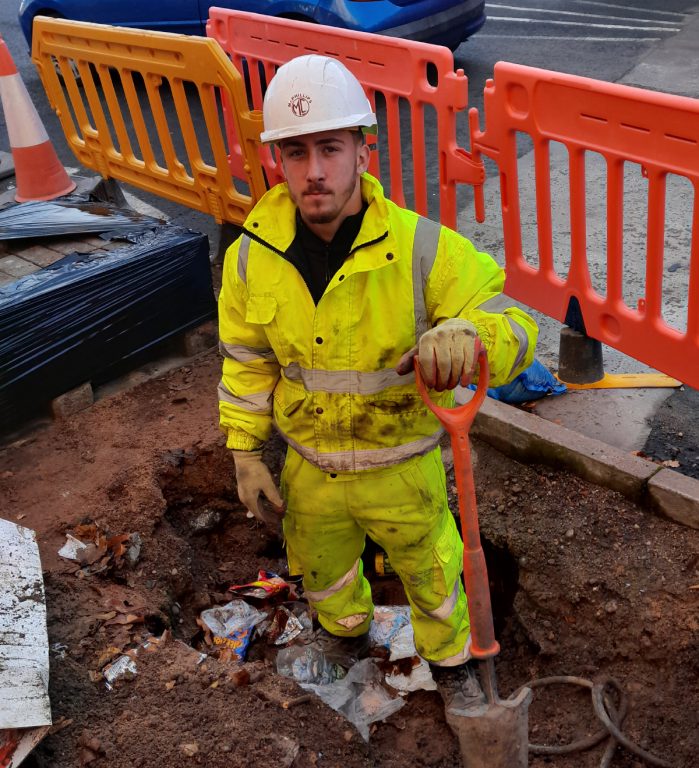Hi, I’m Kai Ginifer and I’m an apprentice with McPhillips. I’ve agreed to write a diary about what it’s like being an apprentice and hope that it might inspire others to check out this route into construction.
I’ve been with McPhillips for over a year. As an apprentice I spend 3 weeks a month on site and 1 week at Telford College studying towards an NVQ Level 2 in Construction Operations. I also hope to gain several industry tickets. I’ve already achieved my ‘CAT and Genny’ Operation Ticket, that’s a ‘Cable Avoidance Tool’, we use it to detect cables underground before we start digging.
Since I started at McPhillips, I’ve been part of the team working on the Dudley Road Improvement Scheme in Birmingham. This is a big Civils project we’re delivering for Birmingham City Council; we’re installing new cycle routes, footways and bus lanes which involves widening roads and rerouting existing pathways. It’s very hands on. As soon as I started, I was set to work on various jobs under the guidance of my Foreman and other members of the team, I have learned a lot from them.
Recently I’ve been mixing and laying concrete to the area surrounding the newly fitted NAL sockets, that stands for Non Alluminated Retention System. We fit these into the ground and they act as a socket for street furniture to be plugged into.
You need an eye for detail. There are lots of access covers and manhole covers that need to be levelled to the correct line so that once the sub base and tarmac have been applied there are no dips and everything is level. Some covers need different heights than others, see what I mean about details!
On Winson Green Road I’ve been helping prepare for gulley’s to be fitted and new kerbs to be re-laid. I helped guide our driver of the ‘Pecker’machine which pecks out concrete without damaging the kerb. Some of the machines have funny names, there’s even one called a ‘Rubber Duck’!
At college we’ve covered health and safety when digging. This involved us walking around the campus looking for examples of where work underground may have been undertaken and also plotting where digging would be a safe option.
We also talked about the CAT and Genny tool; how to use it and when to use it. Then we used a CAT and Genny to identify a cable in the ground, then dug out a hole to uncover the cable to prove we’d used the device correctly. In class we’ve been looking at different types of ducts and what their colours mean when in the ground.
I’m really enjoying the different jobs I get involved with on site, working with the team and my time at college with our other apprentices.
I look forward to sharing more of my experiences with you next time.
Kai
Back



